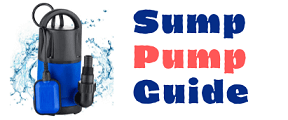Sump pump systems are a crucial component of many homes and buildings, especially those located in areas prone to flooding or excessive water accumulation. These systems help prevent water damage by efficiently removing excess water from basements, crawlspaces, and other low-lying areas. While sump pumps play a key role in this process, an often-overlooked but equally important component is the check valve. In this blog post, we will delve into the world of check valves and their indispensable role in sump pump systems.
What are Check Valves?
A check valve, also known as a non-return or one-way valve, is a mechanical device designed to allow fluid (in this case, water) to flow in one direction while preventing reverse flow. Essentially, it acts as a gatekeeper for fluids, ensuring they move in the desired direction and preventing backflow. Check valves come in various designs, including swing check valves, spring-loaded check valves, and piston check valves. They are widely used in industries ranging from plumbing and irrigation to industrial processes and, of course, sump pump systems.
10 Bestselling Check Valves in Sump Pump Systems
The Role of Check Valves in Sump Pump Systems
Imagine your sump pump has just done its job and removed excess water from your basement. However, without a check valve, that water could easily flow right back into the sump pit, requiring your pump to work twice as hard and potentially leading to rapid wear and tear. This is where the check valve comes in.
Preventing Backflow:
The primary role of a check valve in a sump pump system is to prevent the backflow of water. As water is pumped out of the sump pit, the check valve ensures that it cannot flow back into the pit when the pump shuts off. This not only saves energy but also extends the lifespan of the pump by reducing unnecessary cycling.
Maintaining Pump Prime:
Many sump pumps use a centrifugal impeller to move water. This design requires the pump to be filled with water before it can effectively pump water out. If backflow occurs when the pump shuts off, it can lead to a loss of prime. A check valve prevents this by keeping the water in the discharge pipe, ensuring that the pump remains primed and ready for action.
Minimizing Wear and Tear:
Sump pumps are mechanical devices that undergo a fair amount of stress during their operation. Allowing backflow into the sump pit forces the pump to start and stop more frequently, subjecting it to unnecessary strain. By preventing backflow, a check valve reduces the wear and tear on the pump and associated components.
Installation and Maintenance
Proper installation and maintenance of a check valve are essential for the efficient operation of a sump pump system. During installation, the check valve should be placed on the discharge pipe, ideally as close to the pump outlet as possible. This location maximizes its effectiveness in preventing backflow.
Regular maintenance involves checking for any debris or buildup that could hinder the valve’s function. Inspecting the valve periodically and ensuring it moves freely will help maintain its efficiency.
Common FAQs About Check Valves in Sump Pump Systems
Q1. Why is a check valve necessary for a sump pump system?
A check valve is essential for a sump pump system because it prevents backflow of water into the sump pit after the pump has shut off. This prevents the pump from cycling unnecessarily, maintains pump prime, and reduces wear and tear on the pump. Without a check valve, the pump’s efficiency would decrease, potentially leading to more frequent breakdowns and higher energy consumption.
Q2. Can any type of check valve be used in a sump pump system?
While various types of check valves exist, not all are suitable for sump pump systems. Swing check valves and spring-loaded check valves are commonly used in these systems due to their reliable design and ability to work effectively with varying water flow rates. Piston check valves might not be ideal for sump pump applications due to their more complex mechanism.
Q3. Where should the check valve be installed in a sump pump system?
The check valve should be installed on the discharge pipe of the sump pump system, preferably as close to the pump’s outlet as possible. This location ensures that water doesn’t flow back into the sump pit, maintaining the pump’s prime and preventing unnecessary wear and tear on the pump.
Q4. Can a check valve become clogged or malfunction?
Yes, over time, debris and sediment can accumulate around the check valve, potentially obstructing its movement or affecting its sealing ability. Regular maintenance is necessary to inspect and clean the valve, ensuring it operates smoothly. If a check valve becomes severely damaged or fails, it should be replaced promptly to prevent water damage and pump inefficiency.
Q5. Do all sump pump systems require a check valve?
While not all sump pump systems absolutely require a check valve, using one is highly recommended for the reasons mentioned earlier. The benefits of preventing backflow and maintaining pump efficiency apply to most sump pump setups. Therefore, including a check valve in your system is a wise choice to ensure the longevity and reliability of your pump.
Conclusion
While sump pumps are the stars of the show when it comes to water removal, check valves play a crucial supporting role. These unassuming devices ensure that the hard work your sump pump puts in doesn’t go to waste by preventing backflow and maintaining pump prime. Without check valves, sump pump systems would be far less effective and efficient, leaving homes and buildings vulnerable to the damaging effects of excess water. So, the next time you think about sump pump systems, remember the unsung hero—the check valve.




